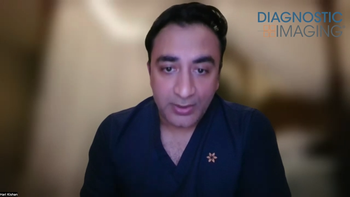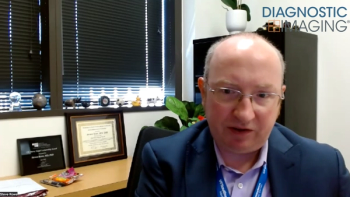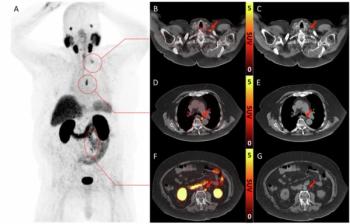
Vascular intervention offers good growth opportunities
Radiologists in training with an interest in vascular intervention can look forward to a bright future, according to the president of the Cardiovascular and Interventional Radiological Society of Europe. Prospects are good, though would-be interventionalists should remain alert to the challenges to their potential business, Prof. Jim Reekers said during a European Congress of Radiology 2008 session organized by the Radiology Trainees Forum.
Radiologists in training with an interest in vascular intervention can look forward to a bright future, according to the president of the Cardiovascular and Interventional Radiological Society of Europe. Prospects are good, though would-be interventionalists should remain alert to the challenges to their potential business, Prof. Jim Reekers said during a European Congress of Radiology 2008 session organized by the Radiology Trainees Forum.
Reekers advised his audience to make friends with clinical and surgical specialists, instead of seeing them as a threat. Lack of cooperation could restrict access to prospective patients.
"Don't feel depressed. Don't say: 'They are going to take my business.' We are much better equipped," he said. "But we don't have beds, so they own the patients at the moment."
Interdepartmental cooperation is particular important for radiologists hoping to treat women with symptomatic fibroids. Several multicenter studies have confirmed the value of uterine artery embolization as an alternative to hysterectomy. At the moment, however, most women with fibroid disease that cannot be treated with drugs or hysteroscopy will have invasive surgery.
"Fewer than 5% of patients in Europe who could undergo uterine fibroid embolization do so," said Reekers, a professor of interventional radiology at the Amsterdam Medical Centre in the Netherlands. "Young radiologists dedicated to vascular disease should recognize this as an important issue."
Interventional radiologists who want to set up a UAE practice will need to raise awareness of the procedure, he said. The CIRSE website contains details on fibroid embolization in four different languages suitable for distribution to patients.
Another potential growth opportunity is the treatment of lower leg vascular disease in diabetic patients. Because these patients often have chronic ischemia, their risk of developing foot ulcers from simple cuts or blisters is high. Subintimal angioplasty offers a fast, effective way of restoring blood flow to the ulcer, promoting healing and preventing infection. Although the procedure is only temporary, it avoids the need for immediate amputation.
"It is no joke for these patients. Having four toes and half a foot is much better than having no foot," Reekers said. "This is a progressive disease. If you amputate one leg and they come back next year with the same problems in the other leg, then you are in trouble."Radiologists at the Amsterdam Medical Centre use duplex ultrasound and pressure measurements prior to intervention and laser Doppler to monitor the procedure. MR angiography is not part of the workup, given the age of patients and the discomfort they would experience lying still.
Reekers stressed the need for cooperation with clinical colleagues. All options should be considered before going ahead with recanalization."It should never be the sole decision of the radiologist or the surgeon. It should always be a discussion among professionals to decide: 'Who has the best treatment?'" he said.
-By Paula Gould
Newsletter
Stay at the forefront of radiology with the Diagnostic Imaging newsletter, delivering the latest news, clinical insights, and imaging advancements for today’s radiologists.






























